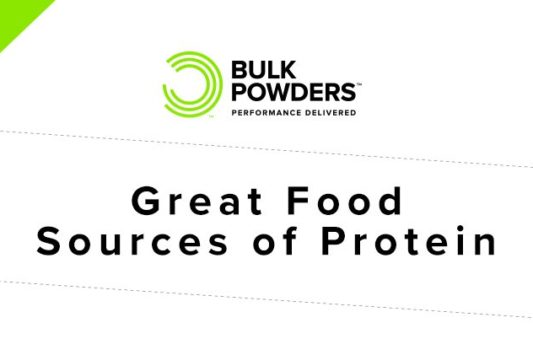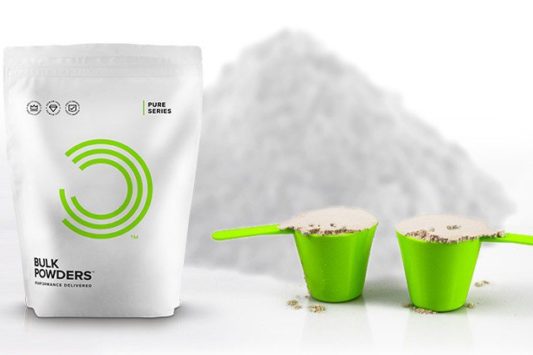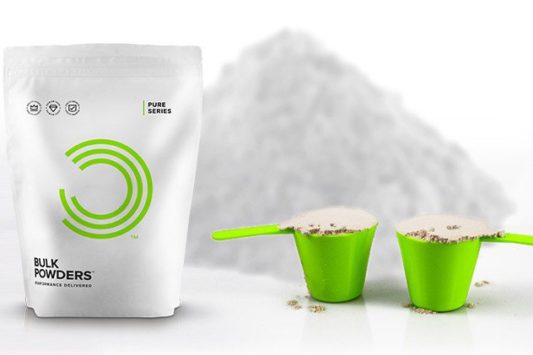When it comes to quality sources of protein, those that come from dairy sources are up there with the very best. Whey and casein are the two major proteins that can be found in milk, and protein supplements are available that contain various forms of both whey and casein such as whey concentrate, isolate or hydrolysate, calcium caseinate (the casein extracted from milk) and micellar casein, which is the most ‘pure’ form of casein available. Some protein powders are ‘blend proteins’ containing both whey and casein and there are also protein powders derived directly from milk, containing milk protein concentrate or isolate, which preserve whey and casein in the ratios found naturally in milk. All of these forms can be considered ‘quality’ proteins, but are there any differences?
When we consider what ‘protein quality’ is we have to consider a few different components. Firstly, does it provide a complete profile of essential amino acids? Secondly how available are the amino acids contained in the protein source due to its digestibility? And finally, how much leucine does it contain?
When it comes to dairy proteins these are highly digestible and contain a complete spectrum of amino acids, with both whey and casein ranking highly on this list alongside milk protein concentrate, which comes top of the list on major protein ranking scores; the PDCAA (Protein Digestibility Corrected Amino Acid Score) and the DIAAS (Digestible Indispensable Amino Acid Score).
These two scores factor in how much of the amino acids in a protein source are absorbed before being excreted. The DIAAS is considered a more accurate reflection of protein quality because it factors in other ‘anti-nutrient factors’ that also effect digestion. This is important as any amino acids passing into the large intestine can be digested by bacteria, thus giving the false impression of them being absorbed in the small intestine, which is ideally where we want them to be absorbed into our circulation for uptake into the muscles. This is a slight issue with complete plant protein sources such as soy isolate, as although it is a good source of protein, reflected by its PDCAAS score, it is not as highly regarded as whey, milk protein concentrate and other animal proteins when using the DIAAS1.
There are however two other areas which we may need to consider when choosing between casein, whey and indeed other protein sources; their speed of digestion and absorption and its leucine content. Whey protein is quicker to digest and absorb in to the body, and a typical 30g serving has enough leucine to trigger muscle protein synthesis. Casein on the other hand coagulates in the stomach, so is much slower to digest but provides a much more sustained supply of amino acids for several hours after ingestion. However, casein has lower leucine content so does not maximise our muscle protein synthesis response.
Leucine is an important consideration in some regards as we require enough in each meal to trigger muscle protein synthesis (MPS), the creation of new muscle proteins2. This has potential implications for both recovery and muscle growth. It may seem in this regard that whey has the advantage over casein as it will maximally stimulate MPS and is quicker absorbed, this would make it the perfect choice for times when we want to increase amino acid availability and ensure MPS is triggered fully such as after a training session.
There are other times though where casein may have an advantage over whey. Because amino acids from whey appear quickly in the blood stream, this increases the chance that any excessive amino acids appearing in the blood stream are oxidised for energy, not used for muscle building3. In any case, within a few hours we ideally need to make sure we eat quality protein again to make the most of having a sustained supply of amino acids to provide the muscles, and other tissues, with the building blocks to repair and grow.
As our body will also elevate protein synthesis for many hours, in fact often days, as a response to training, to maximise nutritional MPS over that period as well we want to consume meals containing at least 20-30g of quality protein every 4-6 hours (any more frequently has no added benefit on MPS)2. However, when we sleep we are potentially going to be without amino acids for several hours and this is where casein really comes into its own. We might not get the same spike in MPS (although you could just add some whey to your casein!) as with whey but with casein we are going to make sure that our body has a sustained supply of amino acids, to keep the body in a consistent positive ‘nitrogen balance’, which basically means more potential for muscle growth3.
In summary, both whey and casein can have their benefits as a convenient and cost effective protein source when considered alongside your total daily protein intake. They provide all our essential muscle building amino acids and have their different potential benefits depending on when we choose to use them. In ‘real world’ terms it is still unclear how this translates directly into muscle growth and it is very important to remember for anyone looking to grow muscle, or even just recover from training, that total daily protein intake is the most important consideration. The odd shake here or there whilst neglecting overall protein intake and diet in general is not the best approach and is unlikely to be the quickest way to get the results you want.
References
1.) Phillips (2017) Current Concepts and Unresolved Questions in Dietary Protein Requirements and Supplements in Adults. Frontiers in Nutrition, Volume 4, Article 13.
2.) Phillips and Van Loom (2011) Dietary protein for athletes: From requirements to optimum adaptation. Journal of Sports Sciences, 29(S1): S29–S38
3.) Dangin et al. (2001) The digestion rate of protein is an independent regulating factor of postprandial protein retention, American Journal of Physiology, Endocrinology and Metabolism 280:340–348.






